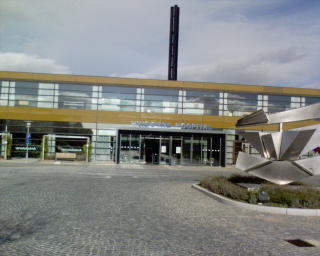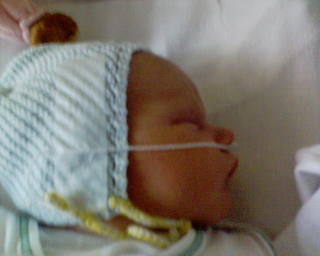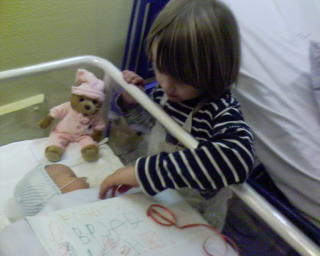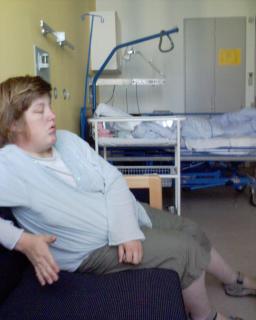Kernicterus
 Hvidovre Hospital
Hvidovre Hospital Introduktion til Fødeafdelingens hjemmeside:
NORD - National Organization for Rare Disorders, Inc.:
"Kernicterus is a rare neurological disorder characterized by excessive levels of bilirubin in the blood (hyperbilirubinemia) during infancy. Bilirubin is an orange-yellow bile pigment that is a byproduct of the natural breakdown of hemoglobin in red blood cells (hemolysis). Toxic levels of bilirubin may accumulate in the brain, potentially resulting in a variety of symptoms and physical findings. These symptoms may include lack of energy (lethargy), poor feeding habits, fever, and vomiting. Affected infants may also experience the absence of certain reflexes (e.g., Moro reflex, etc.); mild to severe muscle spasms including those in which the head and heels are bent backward and the body bows forward (opisthotonus); and/or uncontrolled involuntary muscle movements (spasticity). In some cases, infants with kernicterus may develop life-threatening complications."

Stine Barseø Kristoffersen
4 days old
she was very sleepy and
bilrubin test reasults are awaited
Kernicterus
did not feed for 7 hours
so has a tube
Gynækologisk-Obstetrisk Afdeling
Kettegård Allé 30, 2650 Hvidovre, Danmark.
Tlf.(+45) 3632 3632,
Bilirubin Encephalopathy - Google Search
Bilirubin Encephalopathy: "The patient is a 2-year-old boy with developmental delay due to sequelae from the resorption of large cephalohematomas sustained as a result of vacuum extraction during delivery. He initially had seizures, which resolved approximately 1 year previously but experienced recurrence of seizure activity after he was taken off his antiseizure medications"

with big sister Freja aged 5
MedlinePlus Medical Encyclopedia: Jaundice - yellow skin: "Physiologic jaundice is the name for normal jaundice commonly seen in healthy babies.
Pathologic jaundice is the name given when jaundice presents a health risk, either because of its degree or its cause. Pathologic jaundice can occur in children or adults. It arises for many reasons, including blood incompatibilities, blood diseases, genetic syndromes, hepatitis, cirrhosis, bile duct blockage, other liver diseases, infections, or medications. The term also applies to physiologic jaundice exaggerated by dehydration, prematurity, difficult delivery, or other reason."

hvidovre hospital - Google Search
her mother also had neonatal jaundice and Kernicterus
A feeding tube is a small, soft, plastic tube placed through the nose (NG) or mouth (OG) into the stomach. These tubes are used to provide feedings and medications into the stomach until the baby can take food by mouth.
WHY IS A FEEDING TUBE USED?
Feedings from the breast or bottle require strength and quite a bit of coordination to accomplish. Sick or premature babies may not have the strength, development, or coordination to bottle or breastfeed. Tube (gavage) feedings allow the baby to get some or all of their feeding into the stomach, which is the most efficient and safest way to provide good nutrition. Oral medications can also be given through the tube.
AKA Gavage tube


2 Comments:
looks like a commersial comment again
machine duplicated
but this guy is so quick to pick up potential custumers
that I will let it ride a while
LOL
Hugh W
Onglyza 2.5mg Tablet is a medicine used to treat type 2 diabetes mellitus. It is used together with a healthy diet and regular exercise to control blood sugar levels. This helps to prevent serious complications of diabetes like kidney damage and blindness.
Post a Comment
<< Home